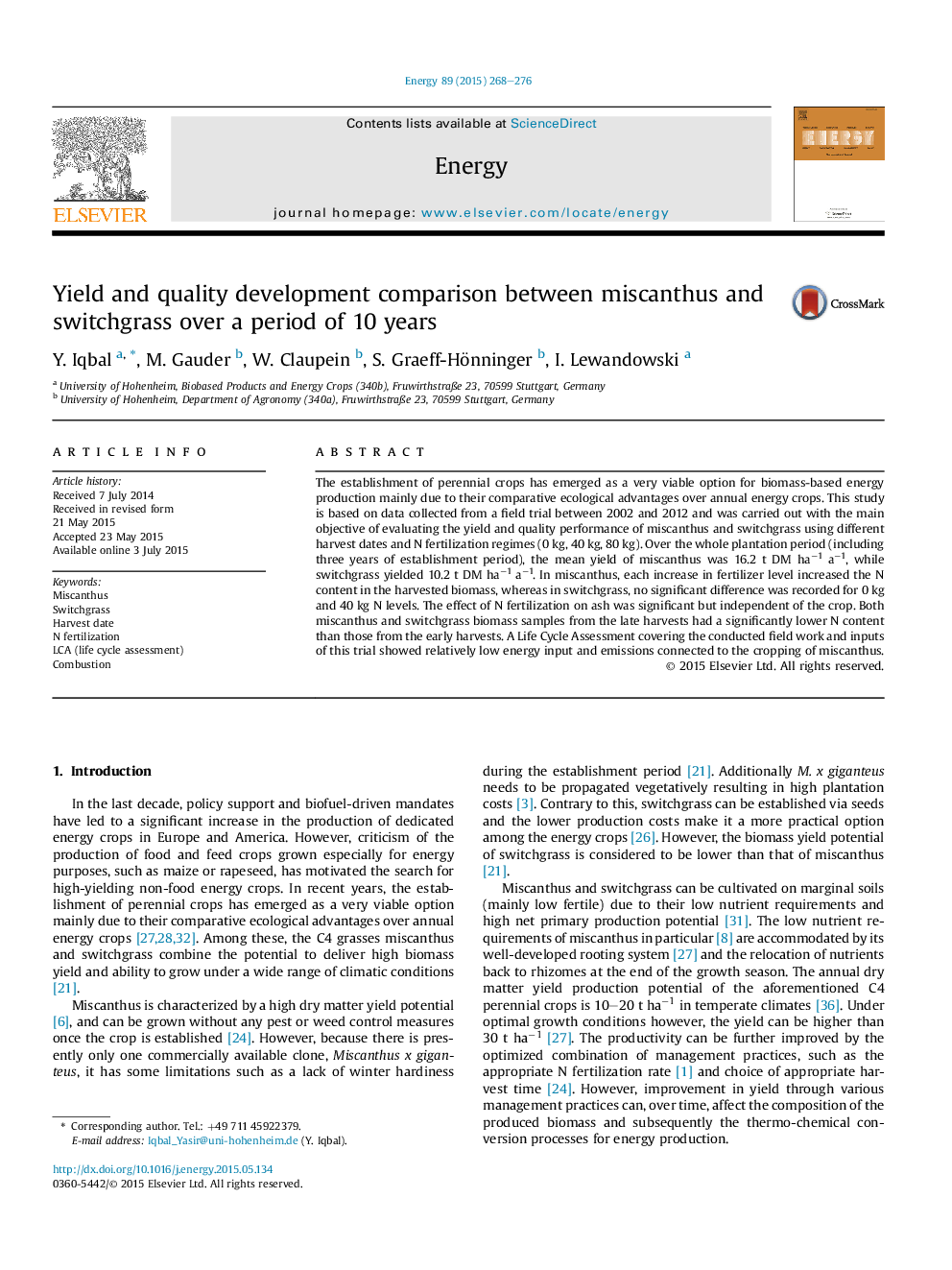| Article ID | Journal | Published Year | Pages | File Type |
|---|---|---|---|---|
| 1731904 | Energy | 2015 | 9 Pages |
•Miscanthus consistently delivered high dry matter yield with high biomass quality.•Switchgrass needed high N fertilization doses to achieve its potential yield.•Miscanthus biomass has low ash and N content compared to switchgrass.•Growing miscanthus has a significant ecological advantage over switchgrass.•Delayed harvest decreased the chances of NOx emissions in both crops.
The establishment of perennial crops has emerged as a very viable option for biomass-based energy production mainly due to their comparative ecological advantages over annual energy crops. This study is based on data collected from a field trial between 2002 and 2012 and was carried out with the main objective of evaluating the yield and quality performance of miscanthus and switchgrass using different harvest dates and N fertilization regimes (0 kg, 40 kg, 80 kg). Over the whole plantation period (including three years of establishment period), the mean yield of miscanthus was 16.2 t DM ha−1 a−1, while switchgrass yielded 10.2 t DM ha−1 a−1. In miscanthus, each increase in fertilizer level increased the N content in the harvested biomass, whereas in switchgrass, no significant difference was recorded for 0 kg and 40 kg N levels. The effect of N fertilization on ash was significant but independent of the crop. Both miscanthus and switchgrass biomass samples from the late harvests had a significantly lower N content than those from the early harvests. A Life Cycle Assessment covering the conducted field work and inputs of this trial showed relatively low energy input and emissions connected to the cropping of miscanthus.
